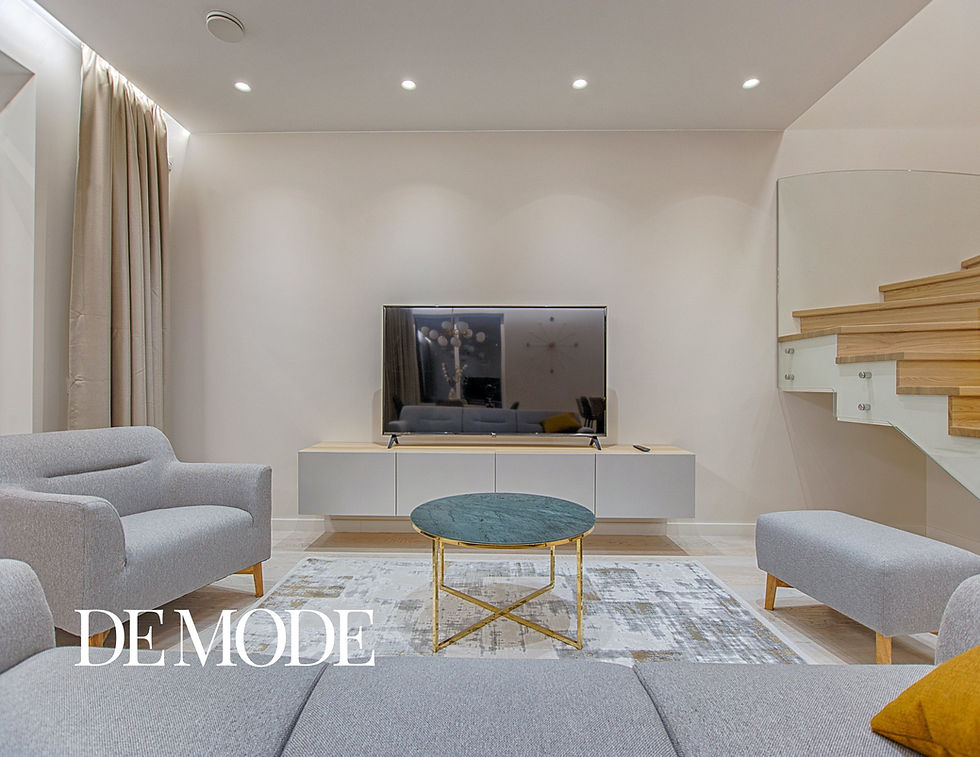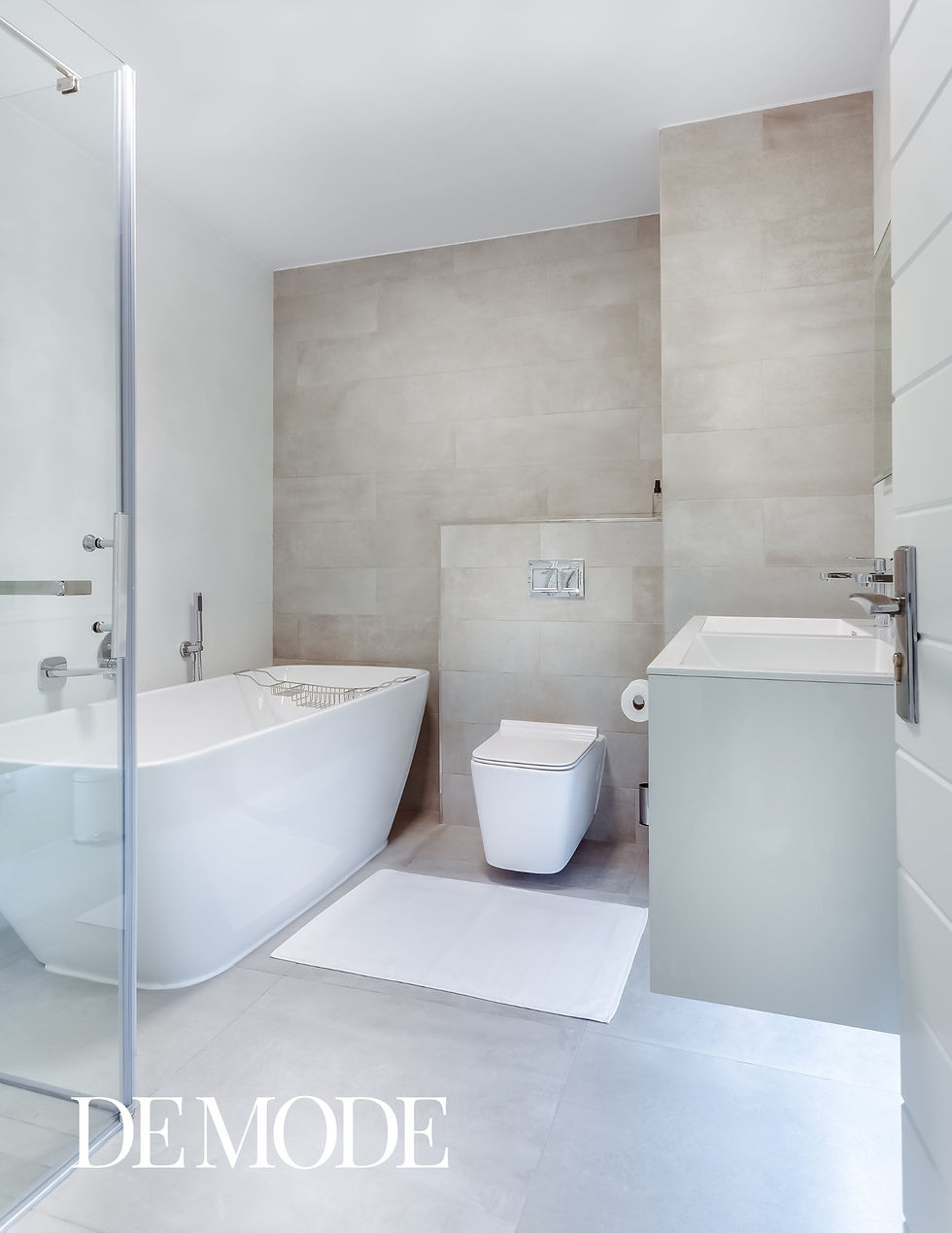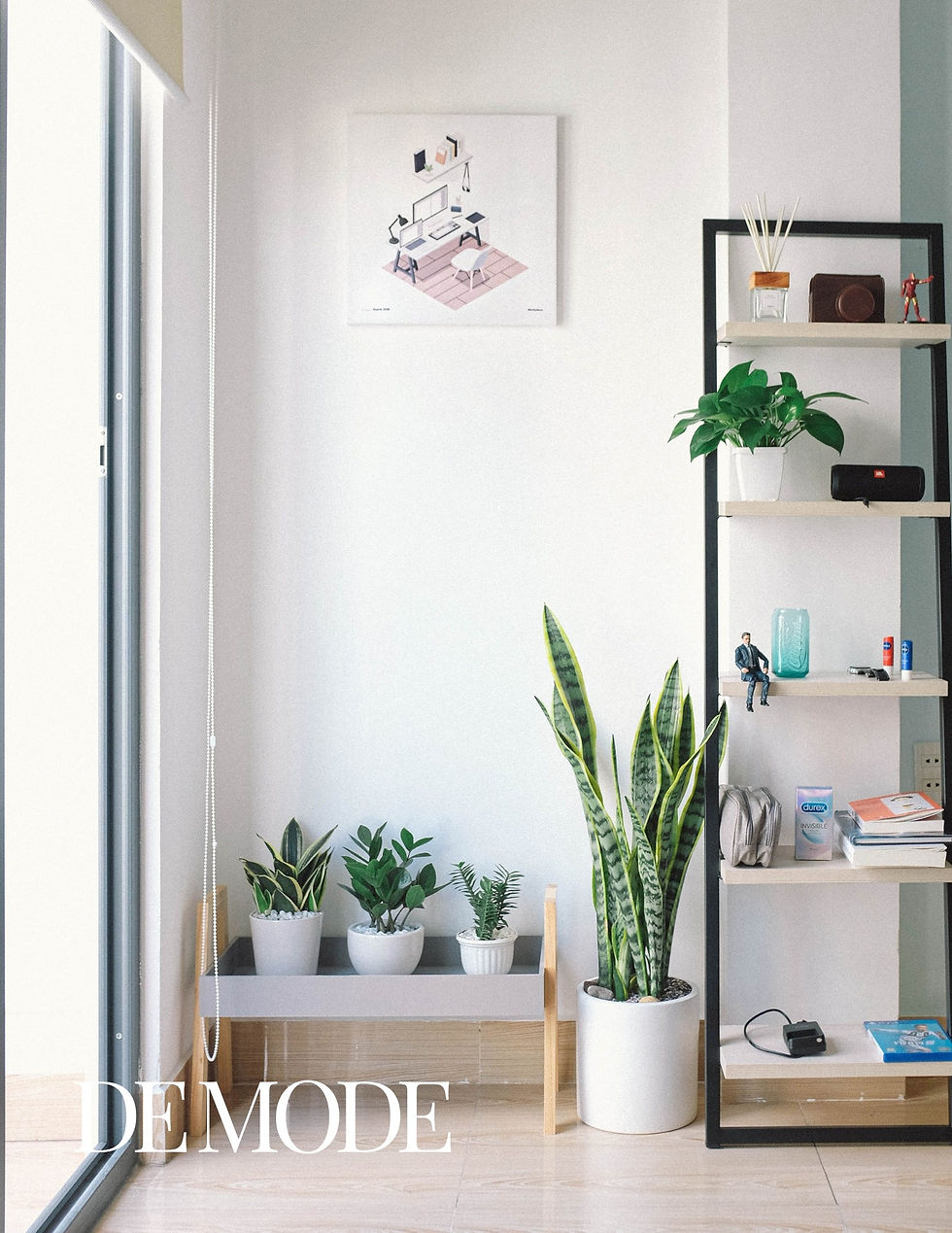"SLEEK AND SOPHISTICATED - THE ALLURE OF MINIMALIST DESIGN": DE MODE GLOBAL
- DE MODE

- Nov 26, 2023
- 4 min read
ORIGINALLY PUBLISHED IN DE MODE | INTERIORS
Article Published on: 26TH NOV 2023 | www.demodemagazine.com
In a world often filled with sensory overload, the minimalist design philosophy stands as a beacon of simplicity and elegance. This design approach, characterized by clean lines, open spaces, and a focus on functionality, has gained immense popularity for its ability to create environments that are not only visually pleasing but also conducive to a sense of calm and clarity. In this exploration of minimalist design, we will delve into the principles that define it, the allure it holds, and how to incorporate this aesthetic into various aspects of our lives.
The Principles of Minimalism:
Simplicity:
At the core of minimalist design is the principle of simplicity. This involves paring down design elements to their essential forms, removing unnecessary embellishments, and embracing a "less is more" mentality.
Functionality:
Minimalist design places a strong emphasis on functionality. Every element within a space or object serves a purpose, and extraneous features are eliminated to create a design that is both practical and aesthetically pleasing.
Clean Lines and Surfaces:
Straight, clean lines are a hallmark of minimalist design. Whether in architecture, furniture, or visual arts, the emphasis is on creating a sense of order and coherence through the use of clear, uncluttered lines and surfaces.
Neutral Color Palette:
Minimalist spaces often feature a neutral color palette, with whites, grays, and earth tones dominating the color scheme. This simplicity in color contributes to a sense of calm and allows other design elements to stand out.
Open Spaces:
Minimalism embraces open spaces, both physically and visually. This can involve decluttering physical spaces by removing unnecessary furniture and decor, as well as incorporating architectural elements that create a sense of openness.
Quality Over Quantity:
Minimalist design favors quality over quantity. Rather than filling a space with numerous items, the focus is on selecting a few high-quality, well-designed pieces that make a strong impact.
Natural Elements:
Bringing the outdoors in is a common theme in minimalist design. The use of natural materials, such as wood and stone, adds warmth and texture to a space without compromising its clean and sleek aesthetic.
Intentionality:
Every design choice in minimalism is intentional. From the placement of furniture to the selection of decor items, each element is carefully chosen to contribute to the overall harmony and balance of the space.

The Allure of Minimalist Design:
Calm and Tranquility:
One of the primary allurements of minimalist design is the sense of calm and tranquility it imparts. A clutter-free environment reduces visual noise, allowing the mind to relax and focus on essential elements.
Timelessness:
Minimalist design has a timeless quality that transcends trends. By focusing on fundamental design principles, minimalist spaces often remain relevant and aesthetically pleasing across different eras.
Enhanced Focus:
With fewer distractions, minimalist environments promote enhanced focus and concentration. This is particularly beneficial in spaces where work, creativity, or relaxation is a priority.
Versatility:
Minimalist design is incredibly versatile. Whether applied to a living room, kitchen, or bedroom, the principles of minimalism can adapt to various spaces and still maintain their aesthetic appeal.
Ease of Maintenance:
Minimalist spaces are inherently easier to maintain. With fewer objects to clean and organize, individuals can spend less time on upkeep, leading to a more efficient and stress-free lifestyle.
Quality Investments:
The emphasis on quality over quantity in minimalist design encourages individuals to invest in well-crafted, enduring pieces. This not only contributes to a more sustainable approach but also ensures that possessions withstand the test of time.
Expressive in Restraint:
Minimalism allows for a unique form of expression within the constraints of simplicity. Thoughtfully chosen pieces and subtle details can speak volumes, showcasing a curated aesthetic that reflects the occupant's personality.
Positive Impact on Well-being:
Many people find that minimalist spaces have a positive impact on their well-being. The reduction of visual clutter can lead to decreased stress levels and an overall sense of harmony within the living environment.

Incorporating Minimalism into Different Aspects of Life:
Minimalist Home Interiors:
When designing a minimalist home interior, start by decluttering and prioritizing essential furniture pieces. Opt for a neutral color palette and incorporate natural materials to add warmth. Embrace open spaces, and let the architecture shine through.
Minimalist Wardrobe:
Apply the principles of minimalism to your wardrobe by adopting a capsule wardrobe approach. Choose versatile, high-quality pieces that can be mixed and matched. Streamlining your clothing choices can simplify your daily routine and contribute to a more intentional approach to fashion.
Minimalist Digital Spaces:
Extend the principles of minimalism to your digital life by decluttering your digital spaces. Organize files, streamline your desktop, and simplify your online presence. A minimalist approach to digital spaces can lead to increased productivity and reduced digital overwhelm.
Minimalist Lifestyle:
Beyond physical spaces, a minimalist lifestyle involves simplifying various aspects of your life. Evaluate your commitments, prioritize meaningful relationships, and focus on experiences rather than material possessions. Adopting a minimalist mindset can lead to a more fulfilling and intentional life.
Minimalist Art and Creativity:
Apply minimalist principles to your creative endeavors. Whether in visual arts, writing, or music, focus on essential elements, eliminate unnecessary complexities, and let the beauty of simplicity shine through.

Challenges and Considerations: While the allure of minimalist design is undeniable, it's important to acknowledge that adopting this aesthetic can present challenges, especially in a world that often encourages excess. Striking the right balance and finding what works for you is key. Additionally, minimalism doesn't necessarily mean starkness or lack of personality. It's about intentional choices and creating spaces that enhance your well-being.
In conclusion, the allure of minimalist design lies in its ability to create spaces that are sleek, sophisticated, and inherently calming. By embracing simplicity, functionality, and intentional design choices, minimalist environments offer a respite from the complexities of modern life. Whether applied to home interiors, wardrobes, digital spaces, or lifestyle choices, minimalism provides a framework for a more intentional and fulfilling way of living. As we navigate the complexities of our daily lives, the allure of minimalist design beckons, inviting us to find beauty in simplicity and purpose in restraint.



Comentários